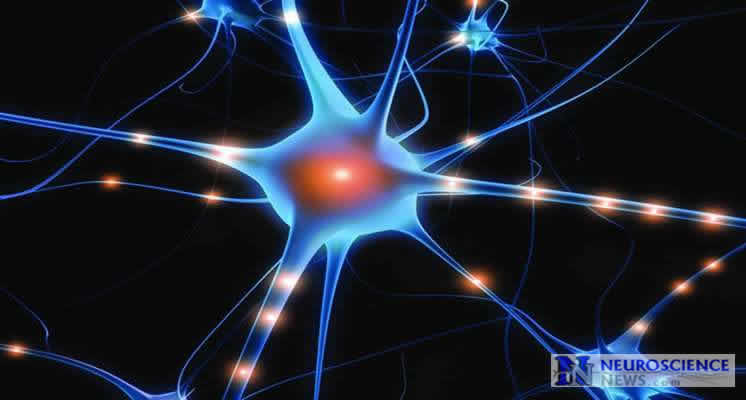Researchers discover neurons affected by ALS that could help speed the identification and testing of therapeutics.
The same nerves that keep a person from crushing a flower or dropping a water glass are teaching scientists something new about amyotrophic lateral sclerosis.
Commonly called ALS or Lou Gehrig’s disease, the neurodegenerative disease kills off motor nerves and brain cells and inhibits the muscles responsible for moving, eating, and breathing. ALS has no cure, in part because of the difficult nature of studying the affected cells. A discovery led by Gregorio Valdez, an assistant professor at the Virginia Tech Carilion Research Institute, might make researching the mechanisms of the disease easier.
“We discovered that proprioceptive sensory neurons connected with muscles are affected early in ALS while those connected with tendons that sense changes in muscle tension are mostly spared,” said Valdez, who is also an assistant professor of biological sciences in Virginia Tech’s College of Science. “That was a big surprise, and it shows that ALS targets select neurons, particularly those with critical functions in muscles.”
In the study, published in the Journal of Comparative Neurology, Valdez used a rodent model to examine proprioceptive sensory neurons. These neurons connect with muscles and motor neurons in the spinal cord to help animals – including humans – understand their physical sense of self.
“Proprioceptive sensory neurons are much easier to study than motor neurons, the main cells affected in ALS,” Valdez said. “Sensory neurons can stay alive for weeks and even months in the laboratory. This relative longevity can give scientists a better tool to identify and test potential therapeutics for the disease.”
The researchers found that neurons degenerated before neurological symptoms appeared. They also discovered that degeneration begins in the cells’ connections with muscles before spreading to the spinal cord.

“Understanding how and why certain cell types resist neurodegeneration and others succumb is a critical step in designing interventions,” said Erin Foff, an assistant professor of neurology at the University of Virginia and a medical doctor who treats ALS patients. She was not involved in this research. “Dr. Valdez’s exciting work offers additional information regarding a poorly understood feature of ALS.”
Source: Ashley Wenners-Herron – Virginia Tech
Image Source: The image is in the public domain
Original Research: Abstract for “Degeneration of proprioceptive sensory nerve endings in mice harboring amyotrophic lateral sclerosis–causing mutations” by Sydney K. Vaughan, Zachary Kemp, Theo Hatzipetros, Fernando Vieira and Gregorio Valdez in Journal of Comparative Neurology. Published online October 1 2015 doi:10.1002/cne.23906
Abstract
Degeneration of proprioceptive sensory nerve endings in mice harboring amyotrophic lateral sclerosis–causing mutations
Amyotrophic lateral sclerosis (ALS) is a neurodegenerative disease that primarily targets the motor system. Although much is known about the effects of ALS on motor neurons and glial cells, little is known about its effect on proprioceptive sensory neurons. This study examines proprioceptive sensory neurons in mice harboring mutations associated with ALS, in SOD1G93A and TDP43A315T transgenic mice. In both transgenic lines, we found fewer proprioceptive sensory neurons containing fluorescently tagged cholera toxin in their soma five days after injecting this retrograde tracer into the tibialis anterior muscle. We asked whether this is due to neuronal loss or selective degeneration of peripheral nerve endings. We found no difference in the total number and size of proprioceptive sensory neuron soma between symptomatic SOD1G93A and control mice. However, analysis of proprioceptive nerve endings in muscles revealed early and significant alterations at Ia/II proprioceptive nerve endings in muscle spindles before the symptomatic phase of the disease. Although these changes occur alongside those at α-motor axons in SOD1G93A mice, Ia/II sensory nerve endings degenerate in the absence of obvious alterations in α-motor axons in TDP43A315T transgenic mice. We next asked whether proprioceptive nerve endings are similarly affected in the spinal cord and found that nerve endings terminating on α-motor neurons are affected during the symptomatic phase and after peripheral nerve endings begin to degenerate. Overall, we show that Ia/II proprioceptive sensory neurons are affected by ALS-causing mutations, with pathological changes starting at their peripheral nerve endings.
“Degeneration of proprioceptive sensory nerve endings in mice harboring amyotrophic lateral sclerosis–causing mutations” by Sydney K. Vaughan, Zachary Kemp, Theo Hatzipetros, Fernando Vieira and Gregorio Valdez in Journal of Comparative Neurology. Published online October 1 2015 doi:10.1002/cne.23906






